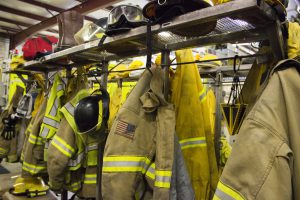Exploring Workers’ Compensation Injury Claims among Firefighters
Posted on by
A recently published research article explored patterns and characteristics of workers’ compensation injury claims over a 17-year period among firefighters in Ohio. Researchers from the National Institute for Occupational Safety and Health (NIOSH) collaborated with the Ohio Bureau of Workers Compensation (OHBWC) to conduct the study, which provided valuable insights into the occupational health and safety challenges faced by firefighters.
Based on data from the OHBWC claims database, the researchers analyzed a comprehensive set of injury claims filed by firefighters from 2001-2017. The objective was to characterize the demographics of firefighter claimants, most frequent injury events, common diagnoses, and seasonal patterns of injuries. Understanding these patterns could inform injury prevention strategies and enhance the safety of firefighters.
Key Study Insights
Trends of Claims and Claimant Demographics
The analysis found an overall decline in workers’ compensation claims among Ohio firefighters over the study period. Consistent with previous reports, most claimants were male firefighters aged between 25 and 54, with the highest number of claims occurring in the 35-44 age group.
Leading Injury Events and Diagnoses
The study found that the top three injury events for firefighter claims were overexertion involving outside sources (e.g., lifting patients, carrying objects), being struck by objects or equipment, and other exertions or bodily reactions. The most prevalent injury diagnoses were sprains of the back, lower extremities, and upper extremities. These findings emphasized the physically demanding nature of firefighting and the importance of preventing sprains and strains through fitness, training, and situational awareness.
Task-specific Injury Characteristics
The analysis revealed that injury events and resulting diagnoses differed between firefighting activities (e.g., extinguishing, evacuating persons from fire, overhaul) and patient care activities (e.g., providing first aid, treating critical illnesses). Firefighting tasks were associated with exposures to harmful substances or environments and fires/explosions. In contrast, patient care tasks consisted of a higher proportion of overexertions involving outside sources. Understanding these distinctions could aid in developing targeted injury prevention strategies, such as mechanized lifting devices for use during patient care and specific personal protective equipment (PPE) considerations for different tasks.
Seasonality of Injuries
The study also explored seasonal patterns in firefighter claims. Slips, trips, and falls were more likely to occur during winter months, possibly due to icy conditions or increased emergency response calls. Exposures to harmful substances or environments were reported more often during summer, possibly due to higher temperatures. Further research is needed to understand the underlying causes and develop appropriate prevention measures.
Implications for Injury Prevention
By examining workers’ compensation claims among Ohio firefighters, this study shed light on demographic trends, key risks, and seasonal variations in firefighter injuries. The findings underscore the importance of tailored injury prevention strategies and highlight the need for continued research to ensure the well-being and safety of this vital workforce. The OHBWC’s efforts in providing safety intervention grants specifically targeted toward firefighters demonstrate a proactive approach to addressing the identified injury events and protecting firefighters’ well-being.
The study’s analysis of workers’ compensation injury claims among Ohio firefighters between 2001-2017 provides a valuable reference for policymakers, fire departments, and occupational health professionals seeking to improve workplace safety for firefighters across the United States. As next steps, NIOSH and OHBWC are conducting a second study to analyze the costs and disability types associated with common event/exposures and diagnoses among firefighters.
Tyler Quinn, PhD, is an Assistant Professor in the Department of Epidemiology and Biostatistics at the West Virginia University School of Public Health. Dr. Quinn was a NIOSH employee when this research was conducted.
Suzanne M. Marsh, MPA, is a Research Statistician and Team Lead for the Special Studies Team, Surveillance and Field Investigations Branch, in the NIOSH Division of Safety Research. She is also the Co-Coordinator for the NIOSH Public Safety Sector Program.
Steven J. Wurzelbacher, PhD, is Manager of the NIOSH Center for Workers’ Compensation Studies in the NIOSH Division of Field Studies and Engineering.
Steven J. Naber, PhD, is a Business Intelligence & Analytics Manager in the Information Technology Division of the Ohio Bureau of Workers’ Compensation.
Posted on by

